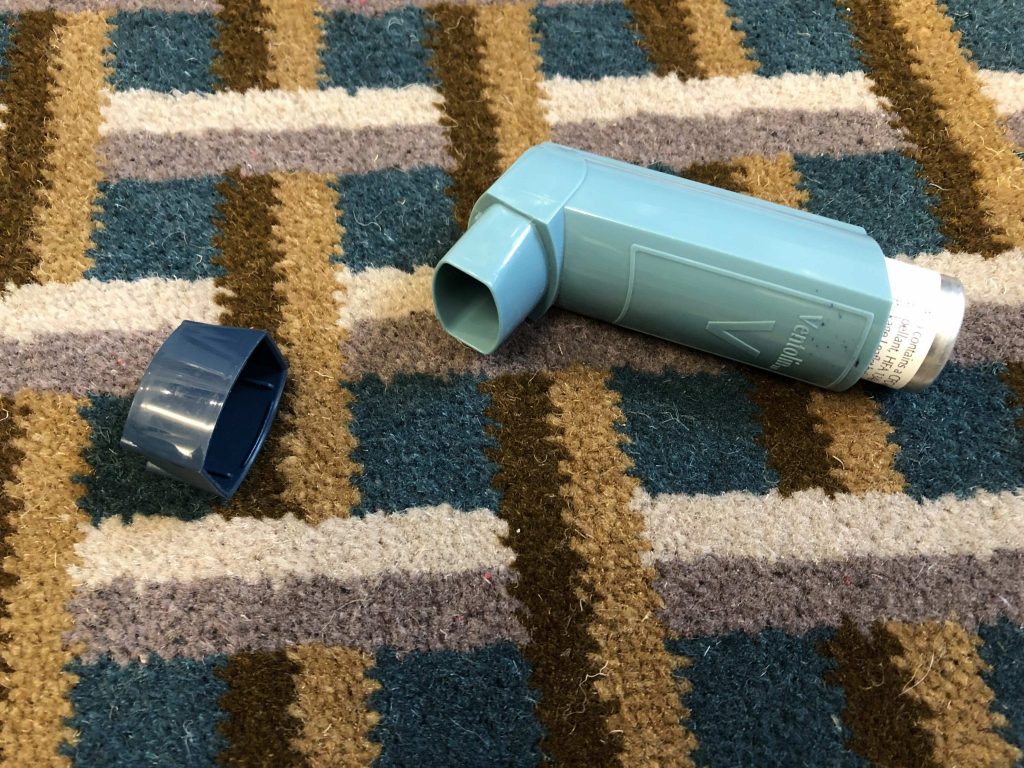Avonvale Carpet customers often ask whether there’s such a thing as an asthma-proof carpet, or whether we thought a switch to hard flooring would alleviate the symptoms experienced by asthma sufferers. While the answer to the first question is a clear no, the answer to the latter is more debatable.
Google ‘asthma and carpets’ and you’ll find loads of articles and reports on the subject. Some say yes, asthma sufferers need to remove all carpets from the home and replace with hard flooring, while others tell you that carpets actually help them to manage their condition. So why this contradiction?
First let’s consider what asthma is. As a respiratory disease affecting the airways into and out of the lungs, asthma can be triggered by a host of different things, including allergens (allergy carrying substances), exercise, viruses and cold air for example.
Such triggers can cause airways to become inflamed, airway muscles tighten, and excess phlegm is produced. This narrows the airways making it difficult to breathe. Sufferers can experience wheezing and coughing and tightness in the chest. It’s not nice.
So why is carpet a cause for concern?
We do know that one of the most common triggers of asthma are dust mites. Tiny microscopic creatures that feed off skin cells, dust mites produce droppings which are an allergen to asthma sufferers. Because carpet naturally captures this allergen within its fibres, it’s historically been seen as a cause for concern.
The truth is though that there is no hard and conclusive scientific evidence that states that removing carpet from the house, and replacing it with hard flooring, is beneficial to asthma sufferers. And there’s lots of good independent research out there now which will tell you that carpets do not trigger asthma.
The fact is that yes, carpet does keep a hold of dust mite allergens, along with others relating to cat and dog hair, pollen, mould spores and so on. However it also does stop the fine allergen particles from becoming airborne and entering the breathing zone when someone walks across the carpet.
But that’s actually a good thing, not a cause for concern.
So what about hard flooring instead?
Smooth hard flooring such as vinyl, wood or laminates can’t however hold onto the allergens like carpet can and in effect allows them to float around. Someone walking across hard flooring more readily disturbs the allergens and makes them airborne and as a result more likely to affect the asthma sufferer.
But despite the practical logic of the argument, you will still find studies that proclaim there’s an increased presence of known asthma allergens in rooms with carpeted floors and higher incidence of health symptoms as a result.
But then you’ll also find those that provide accurate measurements that indicate the average level of fine particles including allergens in the atmosphere above carpeted floors to be less than a half of that above hard flooring.
How to tackle dust mites
Whether you believe that carpets are a good thing or not for asthma sufferers, it goes without saying that keeping them as clean as possible will always help to control the effects of dust mites.
Regular carpet vacuuming, at least once or twice a week, and annual deep cleaning by a professional cleaning company are only going to help reduce the free allergens in a room.
You might also want to consider switching to a vacuum cleaner equipped with a HEPA (high-efficiency particulate air) filter. Often referred to as an ‘allergy vacuum cleaner’, HEPA filter vacuum cleaners ensure that the microscopic allergens are trapped and not released into the air by the vacuum’s exhaust.
It’s also useful to realise that dust mites thrive in hot and humid conditions. So maintaining a dry and well-ventilated house with adequate all-round insulation will certainly help mitigate the problem. Central heating’s fine, but when you can, open the windows and let the fresh air in.
The bigger picture too
When thinking about asthma triggers in the home, it’s important though to keep in mind the bigger picture. Carpets are simply not the only safe harbour for dust mite allergens. There’s also bedding, curtains and textile upholstered furniture for example, they all have a role to play. It’s simply not all about carpets.
And bedding, in fact, exposes asthma sufferers to far more dust mite allergens than carpets. Not only do we sleep in our bedding, but we also make our beds on a daily basis, which releases even more allergens into the bedroom environment. Using mite-impermeable covers on quilts, sheets, pillows and mattresses can help as well as regular hot washing of linen.
So simply replacing carpets with hard-flooring won’t by itself alleviate all of the symptoms experienced by asthma sufferers in the home. Unfortunately it’s just not as simple as that. And depending on your viewpoint, it might actually make matters worse.
Remember too that as well as limiting the release of allergens into the air, carpets are also providing you with sound damping, insulation and cushioning against falls at the same time…
And while there definitely isn’t an asthma-proof carpet, there are though lots of alternatives to consider which might help. You may want to try a carpet with a shorter pile or loop; a man made fibre to help resist dirt and dust, or a natural wool or triextra type carpet offering additional hypoallergenic properties.
Pop into the shop, we’d be glad to talk you through the options.

